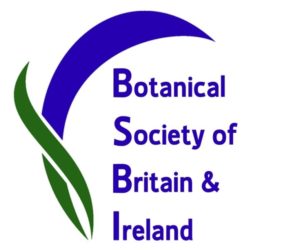Kirkcudbrightshire Botany Group, Loch Ken 12/04/2019
Loch Ken 12th April 2019
This meeting was unusual in that it was just a half-day, despite which there were 10 of us attempting to find the aquatic fern, Pillwort Pilularia pilulifera. But before we even got started, Zoë produced a violet with corolla and spur of the same colour, narrow petals and the outer ones pushed back; the lip with virtually unbranched veins going only halfway down the lip and not to the end. This turned out to be only the fifth VC record of the Early Dog Violet Viola reichenbachiana, in a new site, the furthest west to date. Looks as though this species is pushing westwards and northwards – Chris Miles in VC72 Dumfriesshire also had a new county record this year of what had previously been a largely English species.
After this we started on the Pillwort search, ignoring the roadside verges – except for a brief look at a vegetative garlic species Allium sp., similar to others seen along the banks of the River Nith earlier this year. Shallow water on the loch edges soon gave us abundant Shoreweed Littorella littoralis recognisable by the solid leaf section. But after several minutes of searching we finally came up with isolated shoots of Pillwort, recognisable by its distinctly hooked shoot tip.
Not much else in the water apart from Alternate Water Milfoil Myriophyllum alternifolium and clumps of the aquatic moss Fontinalis antipyretica. Turning then to the fringing grassland and backing marsh to the loch, we had the hairless Smooth Lady’s Mantle Alchemilla glabra in the grass; Whorled Caraway Carum verticillatum in the damper areas, along with the more usual damp ground species such as Meadowsweet Filipendula ulmaria, Common Valerian Valeriana officinalis, Lesser Spearwort Ranunculus flammula and the shiny, finely-divided leaves of Celery-leaved Buttercup R. sceleratus – all of these indicative of nutrient enriched ground. And then the call of Willow Tit from the scrubby hawthorns, eventually finding a small hole in which they were nesting. So one record for the BTO survey of a declining species in the UK.
Sedges were frequent with Brown Sedge Carex disticha in abundance; Common Sedge C. nigra, with fringes of Bottle Sedge C. rostrata and a couple of different ones which I was unable to identify. Then a single very upright bush of Creeping Willow Salix repens just bursting into leaf, with shiny light green leaves.
The rail bank and bed didn’t give us many species but amongst them were the inevitable Gorse Ulex europaeus, Hawthorn Crataegus monogyna and Blackthorn Prunus spinosa. The ground flora had Bugle Ajuga reptans, Goosegrass Galium aparine, Nipplewort Lapsana communis and Foxglove Digitalis purpurea. We picked up a few species, nothing out of the ordinary, on the walk back to the road where the verges and layby turned out to be fairly rich in woodland species. Amongst them were the ancient woodland indicators, Dog’s Mercury Mercurialis perennis, Moschatel Adoxa moschatellina – again! seems to be more frequent this year than previously – Wood Anemone Anemone nemorosa, and Common Enchanter’s Nightshade Circaea lutetiana. Scattered amongst all this was the aggressive non-native invader, garden Yellow Archangel Lamiastrum galeobdolon argentatum, the ubiquitous roadside Ox-eye Daisy Leucanthemum vulgare, Creeping Cinquefoil Potentilla reptans, Gooseberry Ribes uva-ursi and Redcurrant R. rubrum – the first of these two thought to be native here, but the second one definitely an escape from cultivation, the native Wild Privet Ligustrum vulgare with its narrow leaves, not the oval ones of the garden variety, Irish Ivy Hedera hibernica, and the two ferns: Hart’s-tongue Asplenium scolcpendrium and Maidenhair Spleenwort A. trichomanes. And a patch of as yet unidentifiable garlic Allium sp. with boat-shaped cross section leaves.
All in all, 127 species including the nationally scarce Pillwort for which this meeting was aimed. Plus the Willow Tit. A good half day’s work, thanks to all the keen-eyed botanists.
David Hawker
BSBI county recorder for Kirkcudbrightshire VC73

